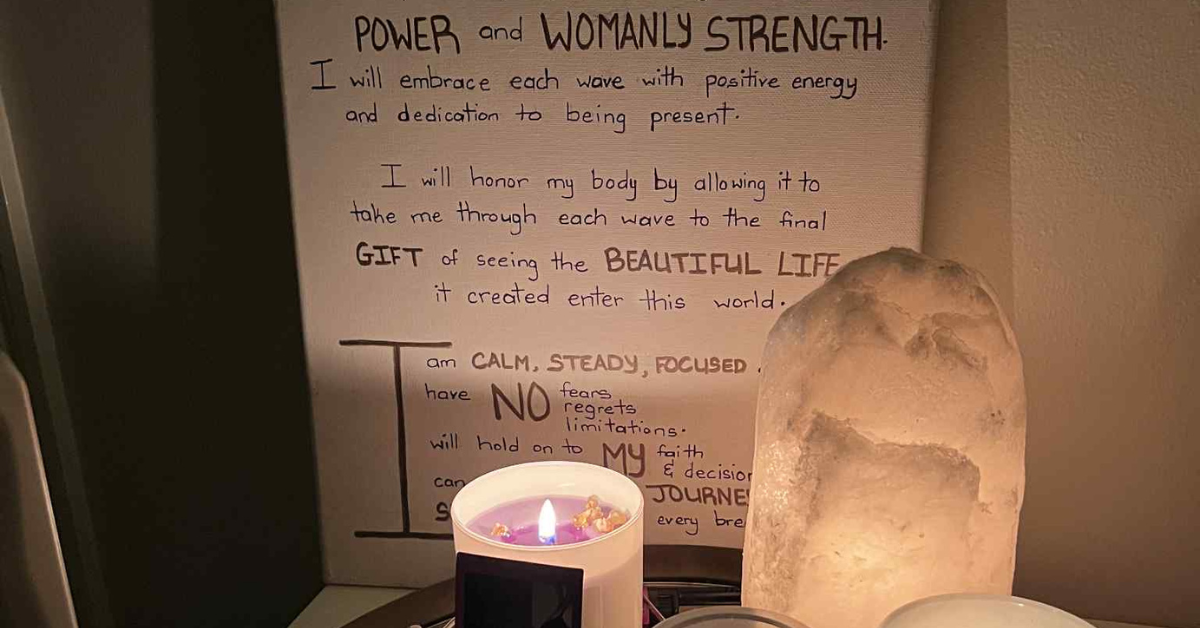Choosing to give birth at home can be a beautiful and empowering experience. As you prepare for this journey, it’s helpful to know the home birth pain relief options that can help you to stay comfortable during labor. Every person’s labor is different, and there’s no way to know exactly how it will feel. Having a variety of tools ready can make a big difference.
At Midwife360, we believe that birth works best when you feel safe, supported, and in control. That includes understanding your options for comfort and pain relief. You might use one or two techniques, or you might try a mix. The best plan is one that fits you.
What Labor Sensations Feel Like
Labor is hard work. The sensations help guide your baby into the world, and while they can be intense, they also have a purpose. Many people find that thinking of contractions as waves of effort rather than pain helps them cope better.
Your experience will depend on many things, like your baby’s position, your preparation, your emotions, and who is supporting you. Labor usually comes in waves. A contraction builds up, reaches a peak, and then fades away. Between contractions, there is often time to rest and recover.
Feeling safe and calm helps your body release endorphins, which are natural pain relievers. If you are tense or afraid, your body may release stress hormones instead. These can make the pain feel worse. This is why a calm environment and a support team are so important.
The Power of Warm Water for Home Birth Pain Relief
Soaking in warm water during labor can be one of the most helpful comfort tools. The water supports your body, eases pressure, and makes it easier to move into different positions. It can also calm your mind and help you relax deeply.
Being in a birth tub during active labor can reduce the intensity of contractions. Many people describe feeling lighter and more in control once they get into the water. The warmth also helps your muscles stay loose and your circulation flow, which may help labor progress.
Some people choose to give birth in the water, while others just labor in the tub and get out to push. Either way, water immersion can bring a sense of privacy and peace. This helps your body work better.
Breathing and Mindfulness
Your breath is one of your best tools during labor. It’s always with you, it’s free, and it helps calm your body. When you breathe slowly and deeply, it tells your brain that you are safe. This helps reduce stress and allows your body to relax between contractions.
You can try simple patterns, such as breathing in for four counts and out for six. Some people like to pair their breath with a sound like a low moan. Focusing on your breath can help keep your mind from getting overwhelmed.
Mindfulness means staying present and taking one contraction at a time. Some people practice this during pregnancy through meditation, affirmations, or hypnobirthing. These tools can shift how you experience labor, making it feel more manageable.
Moving Your Body
One of the biggest benefits of home birth is the freedom to move. You can walk, sway, kneel, sit, squat, or lie down. Changing positions can help ease pain and facilitate easier movement for your baby.
Upright positions like standing or leaning forward use gravity to your advantage. Rocking or swaying can distract your mind and reduce tension. If you are feeling back pressure, hands-and-knees or lunging positions can help.
Birth balls and peanut balls can also support your movement. Sitting on a ball allows gentle bouncing or circles that can ease tension in your hips and lower back. Your midwife or doula can guide you in finding what feels best.
Touch, Massage, and Counterpressure
Loving touch can bring comfort, connection, and even reduce pain during labor. Massage, gentle rubbing, or pressure on certain areas can make a big difference, especially during strong contractions.
Some people like a light touch over the belly or back. Others prefer firm counterpressure on their lower back or hips, especially if they are feeling back labor. This steady pressure helps block pain signals to the brain and brings quick relief.
Your partner, doula, or midwife can learn these techniques in advance. Practicing during pregnancy gives everyone confidence and helps your body associate touch with relaxation.
Nitrous Oxide for Home Birth Pain Relief
At Midwife360, we also offer nitrous oxide, also known as laughing gas. It is a mild pain relief option that you breathe in through a mask. You stay in control. You hold the mask and choose when to use it.
Nitrous doesn’t take away all the sensation, but it helps you relax and stay focused. It can be especially helpful during tough moments during labor.
The gas works quickly and wears off fast. It doesn’t affect your ability to move or push, and it’s safe for your baby, too. If you are planning a home birth and feel nervous about pain, nitrous oxide can be a helpful option to consider.
Creating Your Comfort Plan
A good comfort plan includes a mix of physical, emotional, and mental support. Think about what helps you feel calm during stress or pain. Do you like warm baths, quiet spaces, or hands-on support? These clues can guide your labor choices.
It helps to have several options ready. What works in early labor may feel different later. Talk with your partner and birth team about your preferences so everyone understands how to help you.
Make space in your plan for flexibility. Labor is unpredictable, and you might surprise yourself with what you like. Your midwife and support team will be there to help you adjust and find what works as things change.
Home Birth Pain Relief with Midwife360
Giving birth at home allows you to shape your own experience. Whether you love the tub, find strength in your breath, or lean on your partner’s touch, there are many ways to stay grounded and supported through labor. At Midwife360, we believe in a woman’s power to birth how she wants.
To learn more about our home birth options and how we can support your journey, contact us today. We would love to help you create a safe, peaceful, and empowering birth experience in the comfort of your own home.





